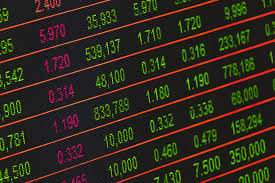Impact of COVID-19 on the American Economy
- Saiesh Shahi

- Jan 14, 2021
- 2 min read
Updated: Jan 22, 2021

During the Spring of 2020, COVID-19, a disease caused by the SARS-CoV-2 virus, started a global pandemic. Recently, the CDC authorized two vaccines to help the current pandemic: Pfizer-BioNTech COVID-19 vaccine and Moderna’s COVID-19 vaccine. Anthony Fauci, the director of the National Institute of Allergy and Infectious Diseases, stated that if 75% to 80% of the population gets vaccinated, herd immunity will allow Americans to return to a normal life a few months later. However, new variants of the virus have emerged from the United Kingdom and South Africa, further intensifying the pandemic. One of the biggest impacts of COVID-19 for the U.S. is on the economy. Let’s take a look at how COVID-19 has negatively impacted the American economy.
COVID-19’s Impact on the American Economy

Since small businesses are unable to function remotely, their profits have decreased significantly during the pandemic. For instance, a restaurant cannot conduct business operations remotely, so their profits are going to decrease if they don’t have enough customers. According to the Brookings Institute, small business revenue is down 20% since January. CNN estimates that around 60% of small businesses that have closed due to COVID will never reopen. Due to layoffs and business shutdowns, the total employee hours worked in America is decreasing. Many businesses need to operate with fewer employees in order to sustain their business operations during the lockdown. In the labor force, the number of people who aren’t attending work quadrupled from January to April. Overall, unemployment has increased dramatically with a peak unemployment rate of approximately 15% in May 2020.
COVID-19 has put a financial burden on many people, especially families with children. When the pandemic started, spending decreased while savings increased. The saving rate of the U.S. reached 34 percent in April, the highest rate ever recorded. However, many industries declined from low spending, which incited fear across America about the supply of goods. Since financial insecurity increased, food insecurity increased as well. Food insecurity has doubled since before the pandemic, affecting approximately 32% of households at its peak in July.
Although the economy is slowly starting to stabilize after the release of two vaccines, it could take a while before our economy returns to pre-pandemic conditions. Ultimately, as we start transitioning to a normal life, unemployment rates, inflation, and financial security will improve.
Sources
“Monthly Employment Situation News Releases and COVID-19 Impact Summaries.” U.S. Bureau of Labor Statistics, U.S. Bureau of Labor Statistics, www.bls.gov/covid19/effects-of-covid-19-pandemic-and-response-on-the-employment-situation-news-release.htm.
Bauer, Lauren, et al. “Ten Facts about COVID-19 and the U.S. Economy.” Brookings, Brookings, 18 Sept. 2020, www.brookings.edu/research/ten-facts-about-covid-19-and-the-u-s-economy/#:~:text=From%20the%20most%20recent%20peak,%5BBEA%5D%202020a%3B%20authors'.
“Different COVID-19 Vaccines.” Centers for Disease Control and Prevention, Centers for Disease Control and Prevention, www.cdc.gov/coronavirus/2019-ncov/vaccines/different-vaccines.html.
Wiener-Bronner, Danielle. “More than Half of Businesses That Closed during the Pandemic Won't Reopen.” CNN, Cable News Network, 17 Sept. 2020, www.cnn.com/2020/09/16/business/yelp-coronavirus-closures/index.html.
Powell, Alvin. “Coronavirus Variant Dampens Prospects for Return to Normal.” Harvard Gazette, Harvard Gazette, 7 Jan. 2021, news.harvard.edu/gazette/story/2021/01/coronavirus-variant-dampens-prospects-for-return-to-normal/.




Comments